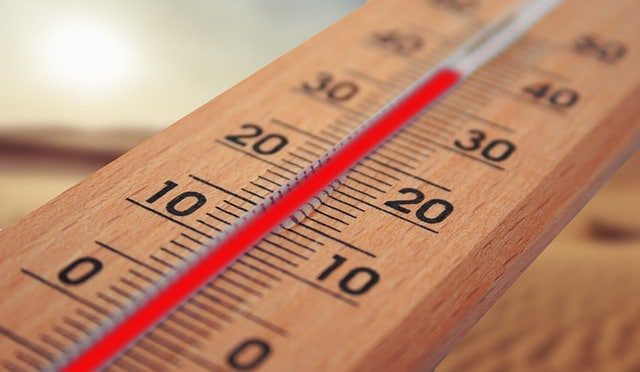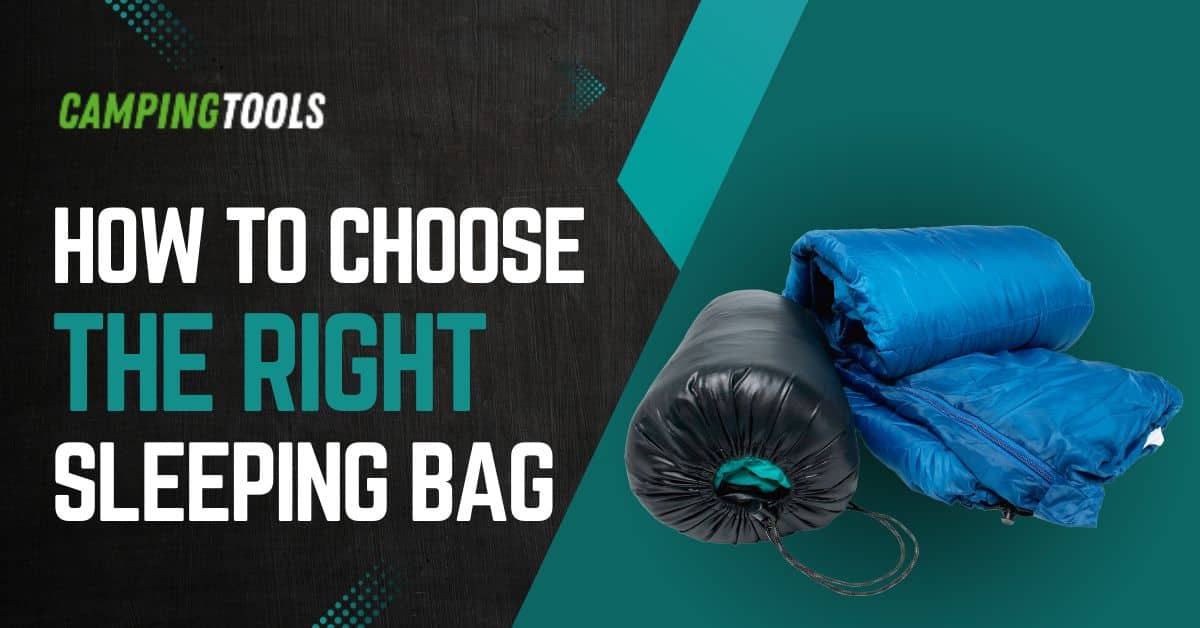Are you tired of tossing and turning at night, unable to find the perfect sleeping bag that suits your needs? Look no further! We’ve got you covered with our ultimate guide on how to choose the right sleeping bag. Whether you’re a seasoned outdoor enthusiast or a novice camper, finding the ideal sleeping bag can make all the difference in ensuring a cozy and restful night’s sleep under the stars. So get ready to snuggle up and embark on this adventure as we unveil everything you need to know about selecting the perfect companion for your next camping escapade!
Introduction to Sleeping Bags
A good night’s sleep is essential for a successful camping trip or outdoor adventure. And when it comes to a comfortable and restful night’s sleep, having the right sleeping bag is crucial. Choosing the right sleeping bag can make all the difference in your overall camping experience, as it provides warmth, comfort, and protection from the elements. In this section, we will introduce you to everything you need to know about sleeping bags – their types, features, materials, and how to choose the right one for your needs.
Types of Sleeping Bags

There are three main types of sleeping bags: rectangular, mummy-shaped, and semi-rectangular. Each type has its own unique features and serves different purposes.
1. Rectangular Sleeping Bags
These are the most traditional type of sleeping bag with a roomy rectangular shape that allows you to move around comfortably inside. They usually have zippers down one or both sides and can be fully unzipped to use as a blanket or even joined with another rectangular bag to create a double-sized sleeping bag.
2. Mummy-Shaped Sleeping Bags
As the name suggests, these sleeping bags are shaped like a mummy with tapered ends and snug-fitting hoods. They provide maximum warmth as they minimize the amount of air space inside the bag which needs heating up. Mummy-shaped bags also weigh less than rectangular ones due to their streamlined design.
3. Semi-Rectangular Sleeping Bags
These are a hybrid between rectangular and mummy-shaped bags. They offer the best of both worlds – roomy enough to move around in, but also with a tapered design for increased warmth and weight savings.
Features of Sleeping Bags

- Temperature Rating
The temperature rating of a sleeping bag indicates the lowest temperature at which it can keep you warm and comfortable. This is an essential feature to consider when choosing a sleeping bag, as it will determine how well you sleep on colder nights. - Material
Sleeping bags are made from various materials, including cotton, polyester, down, and synthetic insulation. Each material has its own benefits and drawbacks in terms of weight, warmth, durability, and price. - Shape
As mentioned earlier, there are three main shapes of sleeping bags – rectangular, mummy-shaped, and semi-rectangular. The shape you choose will depend on your personal preference and the type of camping you will be doing. - Weight
If you plan on carrying your sleeping bag with you on hikes or backpacking trips, then weight is an important factor to consider. Mummy-shaped bags tend to be lighter than rectangular ones due to their streamlined design. - Size/Length
Sleeping bags come in different sizes and lengths to accommodate people of different heights and sizes. It’s important to choose a bag that fits your body comfortably, as a bag that is too small or too big can affect its insulation properties. - Zippers
Sleeping bags typically have zippers along the side or bottom that allow you to open and close the bag. Some bags also have two zippers that can be unzipped from both ends for ventilation or joined with another bag for a double-sized option. - Hood
Mummy-shaped sleeping bags usually come with a hood that can be tightened around your head to keep you warm and protected from the cold.
Packing List for a Well-Organized Backpack
How to Choose the Right Sleeping Bag?
When it comes to purchasing a sleeping bag, there are several factors that you should consider before making your final decision. A good sleeping bag can make all the difference in having a comfortable and restful night’s sleep while camping or backpacking. Here are some key factors to keep in mind when choosing the right sleeping bag for your needs:
Temperature Rating: Temperature Rating Guide for Sleeping Bags

The temperature rating of a sleeping bag is perhaps the most important factor to consider. This refers to the lowest temperature at which the bag will keep you warm and comfortable. It is essential to choose a sleeping bag with an appropriate temperature rating for the climate you will be camping in. If you are unsure about the temperature range of your destination, it is always better to go for a lower rating than necessary as you can always unzip or use extra layers if needed.
Insulation Material
Sleeping bags come with different types of insulation material, such as down feathers, synthetic fibers, or a combination of both. Down feathers provide excellent warmth-to-weight ratio and compressibility but can lose their insulating properties when wet. Synthetic materials, on the other hand, offer better water resistance and durability but may be bulkier and heavier.
Shape and Size: Sleeping Bag Size Guide for Adults

Sleeping bags come in various shapes such as rectangular, mummy-shaped, and semi-rectangular. Mummy-shaped bags have less interior space but offer better warmth retention due to their close fit around the body. Rectangular bags offer more room for movement but may not be as efficient in trapping heat. Consider your body size and sleeping habits to determine which shape is right for you.
Weight and Packability
If you plan on backpacking or carrying your sleeping bag for long distances, weight and packability are essential factors to consider. Down-filled bags tend to be lighter and more compressible than synthetic ones, making them a popular choice among backpackers.
Shell Material: Sleeping Bag Insulation Types
The outer shell of a sleeping bag is responsible for protecting the insulation from moisture and abrasions. Nylon and polyester are the most commonly used materials as they are lightweight, durable, and water-resistant.
Zipper Quality
The quality of the zipper can greatly affect the functionality of a sleeping bag. Look for zippers that glide smoothly without catching on the fabric or getting stuck.
Hood and Draft Tubes
A hood at the top of the sleeping bag and draft tubes along the zipper help prevent warm air from escaping and cold air from entering, keeping you warmer throughout the night.
Price
Sleeping bags come in a wide range of prices, so it’s important to set a budget before starting your search. Keep in mind that investing in a high-quality sleeping bag can save you money in the long run as it will last longer and provide better insulation.
Brand and Warranty
It’s always a good idea to research the brand of the sleeping bag you are considering and read reviews from previous customers. Additionally, check for any warranties offered by the manufacturer to ensure you are covered in case of any defects or issues with the product.
By considering these factors, you can make an informed decision and choose a sleeping bag that will provide comfort and warmth on your outdoor adventures.
Importance of Choosing the Right Sleeping Bag
Choosing the right sleeping bag is crucial for a comfortable and safe outdoor experience. A good night’s sleep is essential when camping, hiking, or any other outdoor activity. Not having the proper sleeping bag can result in a restless night, discomfort, and even potential health risks.
Here are some reasons why it is important to choose the right sleeping bag:
- Temperature Rating:
One of the most critical factors to consider when choosing a sleeping bag is its temperature rating. Sleeping bags are designed to keep you warm by trapping your body heat inside. However, if you choose a lower temperature-rated sleeping bag than needed, you will feel cold during the night. On the other hand, if you opt for a higher-rated sleeping bag than required, you might end up feeling too hot and uncomfortable. - Protection from Extreme Weather Conditions:
When camping or backpacking in extreme weather conditions such as freezing temperatures or heavy rainfalls, having the appropriate sleeping bag can be life-saving. The right sleeping bag will provide adequate insulation and protection against harsh weather elements. - Comfort: How to Choose the Right Sleeping Bag
A comfortable night’s sleep is essential for your overall well-being during an outdoor trip. Choosing a suitable sleeping bag that accommodates your preferred sleep position and allows enough space for movement can significantly impact your comfort level. - Weight and Size:
The weight and size of your sleeping bag play an important role in determining how convenient it is to carry on an outdoor adventure. If you plan on long-distance hiking trips or backpacking adventures where every pound counts, choosing a lightweight and compact sleeping bag can make a significant difference. - Durability:
Investing in a high-quality, durable sleeping bag is crucial for frequent outdoor enthusiasts. A well-made sleeping bag can last for years and withstand harsh weather conditions, making it a reliable piece of gear for your outdoor adventures. - Health Risks:
Using the wrong sleeping bag can also pose potential health risks. For example, using a summer-weight sleeping bag in cold temperatures can lead to hypothermia or frostbite. On the other hand, using a winter-weight sleeping bag in warm temperatures can cause overheating and dehydration.
Conclusion
In conclusion, choosing the right sleeping bag is crucial for a comfortable and enjoyable outdoor experience. It’s important to consider factors such as temperature ratings, insulation material, shape, and size before making a decision. By following this ultimate guide, you can confidently choose the perfect sleeping bag that meets your specific needs and ensures a good night’s sleep while adventuring in the great outdoors. Don’t let an uncomfortable sleeping bag ruin your next camping trip – use these tips to find the right one for you!
FAQs: How to Choose the Right Sleeping Bag
What is the ideal temperature rating for a sleeping bag?
The ideal temperature rating for a sleeping bag depends on the climate and weather conditions of your camping or hiking destination. It is important to choose a sleeping bag with a temperature rating that matches the lowest expected temperature of your trip. For example, if you are camping in cold weather, a bag with a 0-10 degree Fahrenheit rating would be suitable.
How important is weight when choosing a sleeping bag?
Weight should be one of the key factors when choosing a sleeping bag, especially if you are planning to go on long hikes or backpacking trips. A lightweight sleeping bag can make all the difference in terms of comfort and convenience while carrying it around. However, keep in mind that lighter bags may not provide as much warmth as heavier ones.
What type of insulation material should I consider?
There are two main types of insulation materials used in sleeping bags – down and synthetic fill. Down insulation provides an excellent warmth-to-weight ratio and compressibility but tends to lose its insulating properties when wet. On the other hand, synthetic fills are more affordable and retain their insulating properties even when wet.
Can I use my regular bed sheets instead of investing in a sleeping bag?
While using regular bed sheets may seem like an easy solution, they do not provide enough warmth and insulation compared to a proper sleeping bag designed for outdoor use.







2 thoughts on “How to Choose the Right Sleeping Bag”